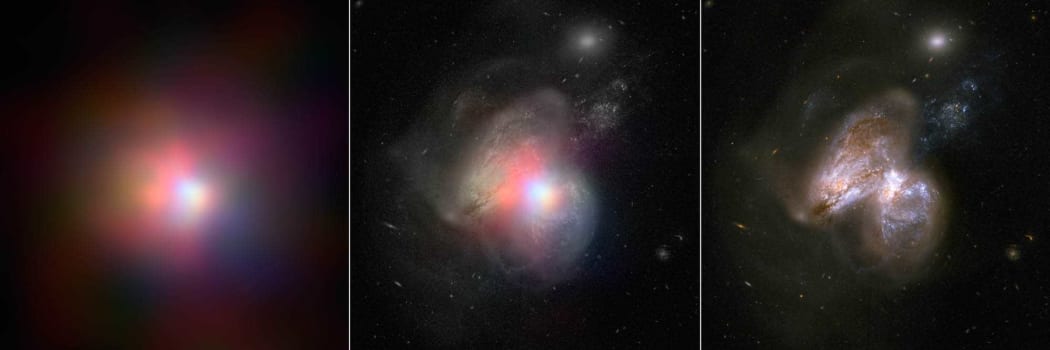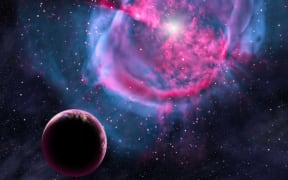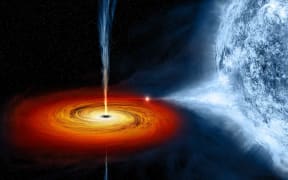It sounds like a space nightmare: Nasa has captured incredible images of two colliding galaxies with supermassive black holes - one of which is "hungry".

The real monster black hole is revealed in this new image from NASA's Nuclear Spectroscopic Telescope Array of colliding galaxies Arp 299. Photo: NASA / JPL-Caltech / GSFC
Nasa said its research, released yesterday, revealed the "galactic mashup" occurring 134 million light-years away.
The galaxies, collectively dubbed Arp 299, had black holes at their hearts. The black hole on the far right, see image above, was actively "gorging" on gas.
"When galaxies collide, gas is sloshed around and driven into their respective nuclei, fuelling the growth of black holes and the formation of stars," said Andrew Ptak, a co-author of the research.
"We want to understand the mechanisms that trigger the black holes to turn on and start consuming the gas," he said.
Nasa said as the hungry black hole fed on gas, processes close to it heated electrons and protons to hundreds of millions of degrees - creating a superhot plasma, or corona, that boosted the visible light up to high-energy X-rays.
The black hole on the far left in the image above was either "snoozing away," in what was referred to as a quiescent, or dormant state, or was buried in so much gas and dust that the X-rays couldn't escape.
Ann Hornschemeier, a co-author of the study, said the odds were low that both black holes were "on at the same time" in a merging pair of galaxies but when they got closer it may happen.
Let's hope there's enough food for both of them.
Nasa explains black holes
- A black hole is a place in space where gravity pulls so much that even light cannot get out.
- The gravity is so strong because matter has been squeezed into a tiny space. This can happen when a star is dying.
- Because no light can get out, people cannot see black holes. They are invisible. Space telescopes with special tools can help find black holes. The special tools can see how stars that are very close to black holes act differently from other stars.
- Black holes can be big or small. Scientists think the smallest black holes are as small as one atom. These black holes are very tiny but have the mass of a large mountain.
- Another kind of black hole is called "stellar." Its mass can be up to 20 times more than the mass of the sun.
- The largest black holes are called "supermassive." These black holes have masses that are more than 1 million suns together.
- Scientists have found proof that every large galaxy contains a supermassive black hole at its core.



